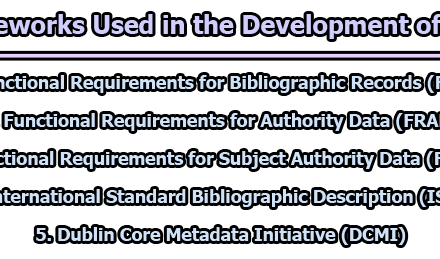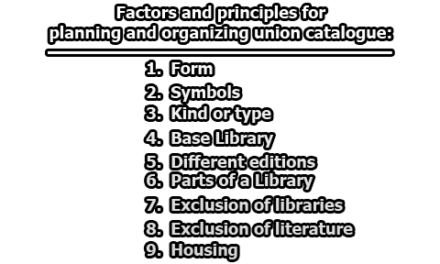Difference between Catalogue and Bibliography:
Both catalogues and bibliographies serve as valuable tools in organizing and accessing information related to library resources. However, they have distinct characteristics and purposes. In this comparison, we will explore the difference between catalogue and bibliography, focusing on their content, scope, format, and usage.
| Aspect | Catalogue | Bibliography |
| Contains call number | Contains call numbers, including class number + Author mark. | Does not contain any call numbers. |
| Indentation | Contains 1st, 2nd, and 3rd indentation. | Generally contains only one running indentation. |
| Scope | Confined to the collection of a particular library or a group of libraries in the case of a Union Catalogue. | Not confined to any collection; materials listed may or may not be available in any library worldwide. |
| Type of Resources Included | May list books, journals, periodicals, and other materials held in the library. | Lists articles published in periodicals, books, reports, documents, monographs, and other materials. |
| Selection | Cannot be selective; it includes all the items in the specified collection. | May be either selective or comprehensive, depending on the purpose. |
| Formats | May exist in online, microfiche, printed, or card form. | Found mostly in book or printed form, but computer-generated bibliographies are also possible. |
| Added Entries | Always contains added entries for different access points. | Generally does not contain added entries, except in some special cases. |
| Use as a Selection Tool | The class catalogue of a large library can serve as a book selection tool for smaller or new libraries. | Works as a major book selection aid for librarians and researchers. |
| Research Use | Primarily serves the research needs of library users. | Acts as a major research tool for academics and researchers. |
| Subject Headings | Contains subject headings for better subject organization. | Also contains subject headings, particularly in subject bibliographies. |
| Additional Information | Provides information on illustrations, height, bibliography, index, series, and ISBN number. | Does not contain all of this information; series and ISBN numbers may be mentioned, but other details are limited. |
| Inclusion of Special Notes | May contain notes with special information, such as if the book was serialized in any periodical or published under a different title by a different publisher in another country. | Does not typically include such form of notes. |
| Annotation | Generally, catalogues do not include annotations or summaries of works. | Annotated bibliographies contain brief summaries of the works. |
| Preparation Basis | Prepared on the basis of a code, such as AACR2, ALA49, L.C (Library of Congress), etc. | Prepared on the basis of some system or method, such as APA, MLA, Chicago Manual of Style, Harvard Referencing, IEEE, AMA, Vancouver style, Turabian style, CSE, ACS, AIP, Bluebook, Oxford referencing, OSCOLA, ALA etc. |
In conclusion, catalogues and bibliographies are distinct tools used in library science to organize and provide access to information about resources. Catalogues focus on the items available in a particular library or group of libraries and include call numbers, subject headings, and other details to help users locate materials. On the other hand, bibliographies provide lists of resources related to a specific topic, often without call numbers, and may include annotations or brief summaries of the works. Understanding the differences between these two tools is essential for efficient resource management and research assistance in libraries.

Library Lecturer at Nurul Amin Degree College










